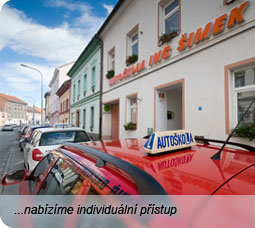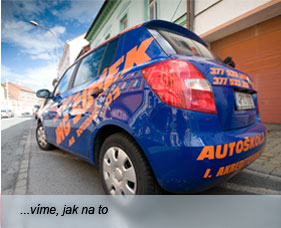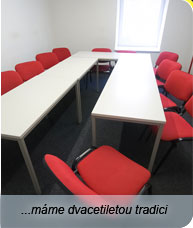training of company car drivers
Duties of a driver
DRIVER MUST:
Use a vehicle which fulfils technical condition
Fully concentrate on driving or riding an animal and follow the situation on the road.
Adapt driving to technical features of a vehicle or physical features of an animal.
Be careful particularly towards children, invalids and animals.
Be considerate towards vehicles transporting children, a driver - beginner or invalid and a vehicle of the driving school.
Follow the instruction of a policeman to undergo the test whether he is not under influence of alcohol or drugs.
Slow down or stop a vehicle before zebra crossing, if the speed is reduced or vehicle stopped before zebra crossing by other drivers driving in the same direction.
Ensure safety of a passenger or an animal or cargo.
DRIVER MUST NOT:
Be under influence of alcohol or drugs.
Drive a vehicle when unfit.
Endanger or limit a pedestrian who crosses a road on zebra crossing or who is going to cross. If necessary the driver must stop a vehicle before a zebra crossing. (This does not apply to a tram driver)
Endanger a pedestrian crossing the road into which the driver turns (even if there is no zebra crossing).
Endanger a cyclist crossing the road on the crossing for cyclists.
Duties of drivers of a motor vehicle
Driver of a motor vehicle MUST:
Use a safety belt, on motorcycle must have a helmet.
Children must be transported in car seats for children, (the driver is responsible for their usage.) When driving the driver must have these documents -
a driving licence,
the certificate about car registration (the certificate from a vehicle),
the green card (evidence of vehicle insurance).
These documents must be submitted for the police inspection (to all sections of police) when requested.
Undergo the inspection of the allowed weight of the vehicle based on policeman´s or customs officer´s requirement.
Driver of a motor vehicle MUST NOT:
Let a person, who has no driving license, who is under influence of alcohol or who does not fulfil conditions see above, drive a car.
Use telephone by holding the telephone in a hand or otherwise. It is allowed to phone via hands free).
Smoke when riding a motorcycle.
Duties of operator of the vehicle
Operator of a vehicle must not operate a vehicle which is not technically capable.
Must not let a person who does not fulfil conditions and whose identity is unknown drive a vehicle.
Vehicles having a priority in driving
Vehicles with blue lights flashing (the police, the firemen, ambulances etc.) are considered to be vehicles having a priority.
Drivers of other vehicles must allow vehicles having a priority in driving and vehicles accompanying them to pass safely and smoothly. If it is necessary a driver must stop on such a place not to obstruct. Drivers of other vehicles must not join a group of vehicles having a priority in driving and accompanying vehicles.
If the density of traffic on a motorway or a road for motor vehicles with two lanes in one direction causes a traffic jam, before stopping drivers of simultaneously moving vehicles must allow a clearance lane at least 3,0 meters wide in order to allow vehicles with a priority in driving to pass.
If a special warning light of a blue colour flashes on a stationary vehicle, drivers of other vehicles must slow down according to circumstances, possibly even stop their vehicle.
It is forbidden to use or imitate special warning lights and special sound warning signals on the roads, which may be used by vehicles having a priority in driving.
Car accident
A driver, who is involved in a car accident, must:
a) immediately stop the vehicle and take such measures to prevent damage to persons or things that may occur as a result of an accident.
b) He/she must take appropriate measures not to endanger the safety of road traffic at the place of an accident.
c) If circumstances require it - he/she is entitled to stop other vehicles, to indicate a place of an accident, and to enable road traffic to move again, particularly public transport vehicles.
d) Show and exchange identity with other persons and provide data about the vehicle/s that are involved in an accident,
A driver must inform the police about an accident IF:
a) a person dies or is injured as a result of an accident
b) physical damage to involved vehicles including transported items exceeds the amount of CZK 100 000,
c) there is a physical damage to the property of a third person, except for the damage to the vehicle, whose driver is involved in an accident or damage to anything transported in this vehicle,
d) If a part of a road or its facility is damaged or destroyed or if a road, public utility, or the environment is damaged during an accident,
e) persons involved in an accident cannot ensure movement of road traffic will resume without further assistance. -48
Principles of safe driving
-Elements of active safety of a vehicle: minimizing the causes of an accident (e. g. Technical state, good tyres and so on)
-Elements of passive safety of a vehicle: minimizing consequences of an accident (safety belts, airbags)
-Safe intervals between vehicles: at least 2 seconds
-Skidding of a vehicle with the power on rear wheels is solved by stepping on the clutch and manoeuvring with the steering wheel in the direction the rear part of a vehicle is moving.
-Skidding of a vehicle with the power on front wheels is solved by the light stepping a gas pedal and manoeuvring with the steering wheel in the direction the rear part of a vehicle is moving.
-Adhesion between a tyre and the surface of a road depends on: the pressure of a tyre, depth of the tyre tread and the surface of a road
-If the speed of a vehicle is doubled twice: braking distance is extended four times.
-ABS: a system assists in manoeuvring a vehicle during full braking on a slippery surface.
-Aquaplaning: a situation during fast driving on a big layer of water: it is impossible to drive a vehicle and a vehicle „swims“
-Pressure in tyres is checked on cool tyres before starting to drive. Pressure has influence on driving features, possibly adhesion can be lost and a vehicle may skid as a consequence of the incorrect pressure in tyres
-Adhesion to a road depends on the surface (e. g. cobbles are slippery)
-The speed of a vehicle must be adjusted to the surface of the road, the weather, the state of the vehicle, etc.
-If there is a defect on the braking system: a vehicle must not be used on the road, it may be towed on a rod.
first aid
Basic first aid procedures
Do not endanger yourself !!!!Call 155,112. Assess possible hazards - fire, safety for the injured - generally move the wounded as little as possible, if there is a danger (fire, injured person is on the road) move them to a safer place using the so-called Rautek maneuver - see below. Overview of the situation - commander (natural leader of the situation) x helpers (rescuers) x pests (watching, who only advise, or even car accident photos, etc. ). Part Tasks - Commander, Provide Help - Helpers, Replace Them - Pests. Providing help - beware of the so-called tunnel vision - to help first those wounded who do not ask for help. Focus on vital life functions.
Attention: For those who have been injured in a traffic accident - we always exercise caution when rescuing them - it is because we have to assume a spinal injury. Therefore, always be careful when rescuing, manipulate with them as little as possible and ask more helpers for provide first aid.
Information we communicate when we call 155, 112
Our name, Place, time and character of the accident, Number of injured, character of their injury, information about injured, Access road to accident site, Contact phone, Never end the call first !!
Bleeding arrest is one of the most important first aid actions. Life of a large artery can endanger life within tens of seconds. The more blood a person loses, the more serious his condition is.
Injury of a large artery can endenger life within tens of seconds, The more blood you lose, the more serious your condition will be. Bleeding is devided into small (abrasion, etc. -that is not necessary to solve it) and large - serious (we have to stopped it immediately). First aid in case of massive bleeding (arterial, venous), press the blood vessel directly in the wound (gloves, sterile squares, clean handkerchief). We sit down, lay down the victim. We lift the limb, stop the bleeding with a pressure bandage. We will launch anti-shock measures - see shock.
Limb throttling is the last possibility of stop bleeding, when it is not possible to stop bleeding in any other way (pressure bandage, limb elevation). But it must be done correctly (limb without pulse), wrong application support bleeding. The scrape must always be wide enough (min. 5cm). Never use wire or shoelace!



